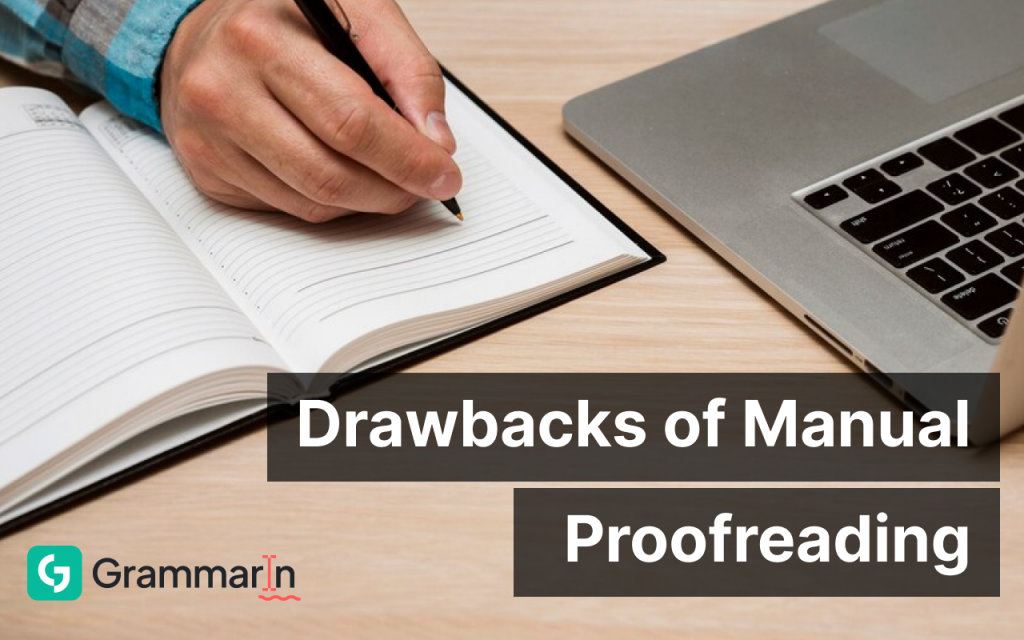Table of Contents
- Disadvantages Associated with Manual Proofreading
- Time and Cost
- Human Error and Bias
- Difficulty with Complex Details
- Inconsistency Across Projects
- Reliance on Human Judgment
- Tips to Overcome Manual Proofreading Issues
- Use of Online Proofreader
- Supports Complex Content
- Ensures Consistency
- Catches Hidden Errors
- Best Practice
Drawbacks of Manual Proofreading – Tips to Overcome
Proofreading is the most important part of any writing process. Although it is done at the last stages, it can make or break the entire work. It helps catch grammar, spelling, punctuation, and formatting mistakes during the initial writing.
Such writing errors in the content can dilute the meaning of the message. They can also make the content difficult to read and follow. That’s why it is always recommended that you check the work before publishing.

There are two ways of proofreading, manual and automated. Most people opt for manual checking despite its downsides. So, in this blog, we will discuss all the problems related to the form of checking text.
Disadvantages Associated with Manual Proofreading
Evaluation of written content through human efforts requires great care. In this process, the material is reviewed and checked by human hands. The purpose is to identify and correct errors and inconsistencies in the work to improve the readability. It involves a person’s keen eye for detail so that the final product is polished, accurate, and professional.
However, it possesses several drawbacks that can lessen the effect of writing. Here is a detailed breakdown of all the negative sides of proofreading without any assistance from technology.
Time and Cost
Manual proofreading can take up a lot of time, especially when the content is long or complex. A human proofreader must carefully review each sentence to pick out mistakes. This slow and repetitive process can delay publishing or submission deadlines, particularly if the content requires more than one revision.
On top of that, hiring professional proofreaders can be quite expensive. If you are working on multiple documents or longer pieces, those charges can quickly add up in the cost. Even when doing it yourself, the time spent on proofreading is time not spent on other productive tasks. In the long run, it can become both time-consuming and financially draining.
Human Error and Bias
No matter how skilled a proofreader is, they are still human. And humans make mistakes. It is obvious to miss small details after looking at the same content for hours. This happens because, after a certain time, the brain starts reading what it expects to see rather than what’s actually written.
Personal bias is another major concern in this regard. A person may unintentionally overlook certain mistakes in the work because they are too familiar with that certain type of content. They might also favor a specific writing style or structure over others. He/She will prefer such material even if the content is not suitable for a specific audience.
These subtle errors can affect the overall clarity and effectiveness of the text. And these errors will persist no matter how many times it is reviewed.
Difficulty with Complex Details
Human proofreaders can struggle when it comes to handling highly technical or detailed content. This is because it requires more attention than any other task. Things like data figures, citations, formatting styles, or discipline-specific terminology require great attention. Therefore, they can skip mistakes like misnumbered references, misused terms, or even small inconsistencies in a table or graph.
In academic or professional writing, these small details are even more important. Even small grammatical or stylistic mistakes can affect the credibility of the work. Moreover, there are higher chances of overlooking mistakes if the material is more complex.
Inconsistency Across Projects
When proofreading is done by the human eye, it becomes difficult to maintain consistency. Inconsistency in tone and style gets worse if the content is checked by different people or over multiple sessions.
Some editors might follow a specific set of rules for the first section and unintentionally switch to another by the time they get to the last. The tone and stylistic choice can shift without notice. It might also change the heading style, which impacts the readability.
This lack of consistency can make the final document unprofessional. It may not always be noticeable to the writer, but it stands out to readers who are seeing the piece for the first time.
Reliance on Human Judgment
While checking a piece of content manually, the editor will be using his/her human judgment to evaluate the text. This has both negative and positive impacts. A skilled proofreader might make thoughtful changes to improve clarity and flow. However, they may also over-edit or under-edit based on personal preference.
This subjective decision-making can sometimes conflict with the tone, purpose, or target audience of the piece. What one person sees as a necessary correction, another might view as unnecessary.
So, it is important to have clear standards for evaluation or advanced tools for better analysis. Otherwise, proofreading becomes a matter of personal taste, which is not always ideal when consistency and accuracy are key.
Tips to Overcome Manual Proofreading Issues
Manual proofreading has merits, but relying on it alone is not always practical. One of the best ways to overcome the common issues is to bring technology into the mix.
Use of Online Proofreader
Using an online proofreader like ours at Grammarin.com can simplify the process and offer better results in less time.
Using an online proofreader can accurately scan and highlight mistakes within seconds. You don’t need to read every line multiple times which significantly reduces the time it takes to finalize your content.
Supports Complex Content
The proofreader is tailored for specific types of writing, like academic, creative, technical, etc. They understand formatting rules and citation standards better than most manual reviewers.
Ensures Consistency
These tools will apply rules uniformly across the entire text. It can correct punctuation, spacing, or capitalization throughout the text. In this way, the output is more consistent than the one we achieved through manual checks.
Catches Hidden Errors
Users can also utilize grammar checker online tools that use advanced algorithms to catch grammar mistakes that even experienced proofreaders can overlook. They can easily detect subject-verb disagreements, article misplacements, or wordiness even in complicated text.
Best Practice
Manual proofreading will always have a place in the editing process. However, the human editor does not have to do all the work. The best way to proofread and edit a piece of content is to integrate manual proofreading with technical tools. Let the tool handle the technical clean up, and then do a final human review for tone and context.


